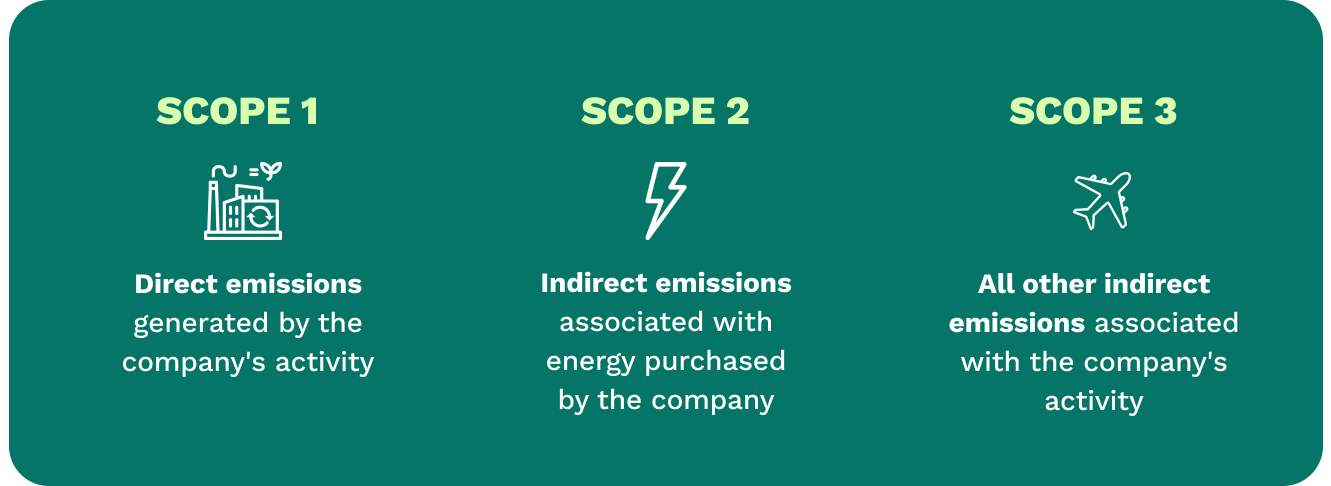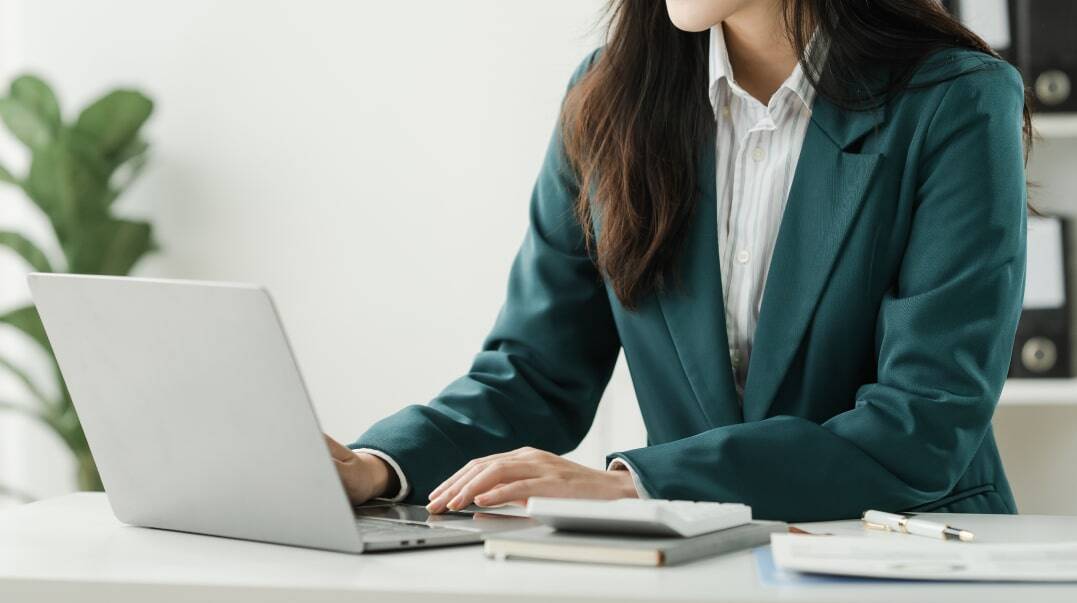From Carbon Offsetting to Climate Contribution: A Guide
Introduction
To bring clarity to these important questions and offer a thorough understanding of climate contribution, ClimateSeed has created a concise guide that showcases the proactive steps companies and organizations can take to make a meaningful impact toward achieving global net-zero emissions.
What is carbon offsetting?
In other words, carbon offsetting is a mechanism through which individuals or organizations can support carbon avoidance or removal projects to compensate for their unavoidable emissions. This action is realized through the purchase of carbon credits, where 1 carbon credit corresponds to 1 tonne of CO₂ avoided or removed by the projects.
However, the value of a carbon credit goes beyond carbon. It can also encompass other benefits like ecosystem services, biodiversity protection, social benefits, and UN Sustainable Development Goals contributions.
Here, we refer to “voluntary offsetting”, which includes “all the approaches adopted by players who voluntarily contribute to carbon removal and avoidance projects” and must be distinguished from the regulated carbon market, where regulated companies (mostly heavy polluting sectors) are legally required to respect a carbon emission cap set by during the Kyoto Protocol.
Due to a lack of common definition and a negative connotation associated with unfavorable carbon offsetting actions, the Net Zero Initiative has proposed shifting from the term "carbon offsetting" to "climate contributions" meaning the support to projects does not compensate for any emission but it is seen as an additional, and necessary contribution to the achievement of global carbon neutrality.
Climate contribution must be combined with emission reduction practices and done in parallel to them. The more an organization reduces its own GHG emissions and contributes to carbon removal and avoidance, the more it can contribute to the achievement of global carbon neutrality. Thus, climate contribution is viewed as a critical component in the global transition to net-zero emissions, aligning with science-based targets and contributing to broader environmental and social goals as outlined by the United Nations’ Sustainable Development Goals.
For more information on carbon offsetting versus climate contribution, read our article.
How can organizations contribute to global carbon neutrality?
Organizations can contribute to global carbon neutrality following a path consisting of four steps: measurement, reduction, contribution to carbon projects , and transparent communication. This short guide will detail each of the four steps to better understand the development of an overall strategy for companies to achieve net-zero emissions.
Step 1. Measure: You can't reduce what you can’t measure
The first step an organization can take to fight climate change is to measure its carbon footprint. Carbon footprint measurement at an organizational level follows precise rules. Several protocols exist to measure CO₂, such as the GHG Protocol, which is the most widely used greenhouse gas accounting standard and is internationally recognized.
The GHG Protocol divides greenhouse gas emissions into three scopes (Scope 1, 2, and 3), which account for direct company emissions and indirect company emissions from upstream and downstream activities. All greenhouse gas emissions are expressed in tCO₂e, tonnes of carbon dioxide equivalent, which includes other greenhouse gases, methane (CH4), and nitrous oxide (N₂O) being the two main ones. A company’s carbon footprint (Scope 1, 2, and 3) should be assessed once a year and is usually included in the sustainability or extra financial report of a company. In Europe, the measurement of GHG emissions is mandatory for companies with more than 500 employees.
Step 2. Reduce: Take action to implement carbon reduction
At an organizational level, measuring the carbon footprint will allow the company to identify the major sources of emissions and design a sustainability strategy to achieve its emission reduction objectives.
The Science Based Targets initiative provides companies with emission reduction guidelines that are in line with the achievement of the Paris Agreement objectives. According to the initiative, Scope 1, 2, and 3 targets must be consistent with a level of decarbonization required to keep global temperature increase well below 2°C compared to pre-industrial temperatures.

To reach this ambition, organizations should set medium and long-term targets up to 2050. The SBTi recommends using “the most ambitious decarbonization scenarios that lead to the earliest reductions and the least cumulative emissions.” Carbon footprint reduction strategies vary depending on the sector and the type of company activities; however, some general guidelines can be identified.
For example, to reduce Scope 2 emissions, the SBTi recommends companies to source renewable electricity suggesting a target of 80% renewable electricity procurement by 2025 and 100% by 2030 as thresholds. For Scope 3 reductions, supplier engagement is key as well as setting targets to influence the behavior of end-users.
Step 3. Contribute: Finance for your unavoidable emissions
As a parallel climate action to GHG reduction efforts, an organization should contribute to account for their unavoidable or residual emissions (emissions that persist) by supporting carbon removal and avoidance projects through the purchase of carbon credits from the voluntary carbon market.
Projects are certified to issue carbon credits and assess the amount of carbon avoided or removed by the project in a specific time period. Following the certification and the issuing of credits, monitoring and reporting activities are conducted to ensure the continuity of the projects. In turn, project activities can be monetized and carbon credits can be distributed and withdrawn by purchasers.
Carbon credits are usually issued every year. Third-party auditors verify the number of emissions absorbed or avoided by the project compared to a base-line, following methodologies established by international or national standards. Carbon credits are issued in public registries to avoid the risk of double-counting, which occurs when two or more organizations monetize and claim the same credit.
When contributing, companies should ensure they are supporting high-quality projects. Thus, the first element to consider is the project certification, that is if the project is certified by an international standard such as Gold Standard, VCS, Plan Vivo, or Climate Action Reserve or a national standard such as Label Bas Carbone in France. Once the project has been certified, it is verified periodically by a third party, so the standard can issue the relevant amount of carbon credits the project has absorbed or avoided for that period. For the standards to issue carbon credits, the projects must follow specific rules and procedures. Specifically, the project must be real, measurable, permanent, additional, independently verified, and unique.
To ensure that a project is of the highest quality, ClimateSeed performs additional audits, which include banking due diligence and the review and validation from our internal Sustainability Committee.
At ClimateSeed, our Projects Team is dedicated to ensuring that the carbon credits purchased by our clients result in verifiable impact, safeguarding the integrity of their climate actions. A project must undergo certification by an internationally or nationally recognized standard. We partner with standards that uphold the highest levels of rigor, certifying that the project is real, measurable, permanent, additional, independently verified, and unique. Additionally, ClimateSeed performs additional audits, including banking due diligence, and reviews rigorously projects based on an internal evaluation framework.
There are different types of emission reduction projects that generate carbon credits, such as:
- Forestry and Land Use: projects encompass a range of initiatives focused on sustainable management and utilization of forests and land resources.
- Renewable Energy: energy that is natural and self-replenishing. These are energies that are alternatives to fossil fuel electricity and heat production.
- Household and Community Devices: centers around benefiting local communities, using their knowledge, and having them involved in the decision-making processes.
- Blue Carbon: refers to Wetlands Restoration and Conservation (WRC) projects dedicated to protecting, rehabilitating, and conserving wetland ecosystems, including marshes, swamps, peatlands, and other ocean and coastal ecosystems.
- Waste Management: projects focus on how we handle waste to minimize its impact on the environment and on human health. Instead of treating waste as the last part of the production chain, these projects are working with the waste to create sources of energy, reduce pollution, and reduce carbon emissions. These projects adopt a more circular approach to climate solutions.
- Agricultural Land Management: involves removing carbon from the atmosphere and sequestering it in the soil. Plants and crops make up part of the carbon cycle as they use CO₂ from the air during photosynthesis. When the plants and crops decompose, some of the CO₂ is stored in the ground and some is released back into the atmosphere.
- Transportation: one of the largest contributors to greenhouse gas emissions. These emissions primarily come from burning fossil fuel for our vehicles, ships, trains and planes.
- Tech-based and Hybrid: Beyond nature-based carbon removal projects, other projects focused on technology as well as hybrid solutions have emerged in the market. These projects have become attractive because they can remove carbon from the atmosphere and store it for thousands of years; however, today these projects are small-scale and costly.
Communicate your climate action to your stakeholders
For carbon offsetting strategies to be successful, companies must be able to communicate about them in an accurate and precise way. A good and transparent communication strategy will protect an organization from greenwashing accusations and malpractices. Therefore, a valid communication strategy is to properly disclose information on supported projects, the environmental and social impacts generated as well as the co-benefits, such as biodiversity, and the SDGs targeted. It also requires an additional explanation of the carbon finance mechanism and its role in achieving the 1.5°C climate goals. Finally, using the right terminology to communicate about climate action is essential for a successful communication strategy.
Following the Net Zero Initiative’s guidelines, here are some useful communication tips for an effective communication strategy:
- Avoid the terminology “carbon offsetting” and favor “climate contribution” instead. The concept of climate contribution is not to compensate for negative emissions but to contribute to projects that capture or avoid CO₂ emissions to accelerate the fight against climate change. Projects supported through climate contributions go beyond carbon absorption or avoidance and achieve other environmental and social impacts that are aligned with the United Nations’ Sustainable Development Goals (SDGs), such as benefits on health, biodiversity, gender equality, and economic development. The more we contribute to high-quality emission reduction projects, the bigger the positive impact on climate and natural ecosystems.
- Avoid being vague and quantify your impact. Make sure to define the scope (1,2,3) your climate contribution accounts for.
- Refrain from claiming your company to be “carbon neutral” as a universal definition of carbon neutrality at a company level has not been defined yet.
- Disclose the number of credits purchased, in tCO₂e, to support an emission reduction project.
- Communicate about your climate action by following ISO 14021.
- Educate and inspire your stakeholders to also support an emission reduction project to generate a larger positive impact.
For more information read our blog, "Communicate about your Climate Contributions."
How should you select a climate contribution project?
Recommendations to select high-quality carbon contribution project
- Be real: each carbon credit must legitimately measure a tonne of CO₂ absorbed or avoided by the project.
- Be measurable: carbon credits must be computed based on robust scientific data and verified methodologies.
- Be additional: “carbon credits must represent emission reductions or removals that would not have otherwise occurred without the added incentive resulting from the carbon market”, as stated in the WWF report.
- Be permanent: the emission reductions represented by the carbon credits cannot be reversed after the issuance of the credit.
- Avoid leakage: generating carbon credits must not generate emissions elsewhere.
- Be monitored, reported, and verified by credible third-party verification systems.
- Comply with social and environmental safeguard: the generation of carbon credits must not violate any law, regulation, or treaty and must meet the international best practice standards for social and environmental safeguard.
Additional recommendations from ClimateSeed to selection carbon projects
- Ensure that the selected projects match your organization’s environmental and social goals. You can rely on experts to select the appropriate projects.
- Ensure that the price margins are clear, and the money you are paying for actually reaches the projects and the local communities.
- Match the project location to where your organization operates or sells its products.
- Match the project typology with your company’s activities or interests.
- Conduct a banking due diligence on the project developers.
- Ensure that the project meets the highest quality standards by ensuring that the project is certified by either an international or national standard such as Gold Standard, VCS, Plan Vivo, or Climate Action Reserve.
How ClimateSeed can help you with your climate contribution?
ClimateSeed enables you to contribute to trusted carbon removal and avoidance projects that generate verified carbon credits. We provide access to a wide range of carefully selected projects, making it easy to find the right initiative for your goals. For more information on how ClimateSeed selection its contribution projects, please read our process.
Our platform digitalizes and secures all operations involved in purchasing carbon credits, enhancing transparency, improving traceability, and mitigating operational and financial risks. Each project is rigorously selected through our three-step verification process, including project certification, developer due diligence, and assessment using our internal evaluation framework to ensure credibility and minimize reputational risks.
Our platform maximizes financial contributions to projects, supporting social and environmental benefits aligned with the UN SDGs. Contributors can manage contributions, track transaction histories, and receive carbon credit certificates. ClimateSeed also offers marketing tools and expert.

Conclusion
Q&A
Carbon offsetting involves buying credits to 'cancel' emissions, often criticised as greenwashing because it does not actively reduce emissions. Climate contribution, on the other hand, involve supporting projects aimed at reducing overall emissions, without claiming immediate carbon neutrality but contributing to a net-zero future. This approach is more transparent and includes broader social and environmental benefits. For more details, see our article on this subject.
To get started on your organization's carbon footprint, follow these key steps:
Define the scope: Identify the activities, sites and sources of emissions to be included in the carbon footprint.
Collect data: Gather data on energy consumption, vehicle emissions, raw material consumption, etc.
Calculate emissions: Use specific emissions factors to convert consumption data into CO₂ emissions.
Analyze results: Evaluate major emissions items and identify reduction opportunities.
Plan actions: Develop an emissions reduction strategy based on the analysis.
Implement and monitor: Implement reduction measures and monitor their effectiveness over time.
It is advisable to call on the expertise of a specialist service provider such as ClimateSeed to measure your carbon footprint accurately and to benefit from advice tailored to your sector and your specific requirements. Please contact us for further details.
Sources:
- Selin N.E., “Carbon Offset”, 2011, Encyclopaedia Britannica, available at: https://www.britannica.com/technology/carbon-offset/additional-info
- Bellassen, V. Leguet B., “The emergence of voluntary carbon offsetting” [Research Report], 2007, 36 p. Hal-01190163, available at https://hal.archives-ouvertes.fr/hal-01190163/document
- Carbon Market: Overview- Ecosystem Marketplace available at: https://www.ecosystemmarketplace.com/marketwatch/carbon/
- https://www.climatecouncil.org.au/resources/what-does-net-zero-emissions-mean/
- Science-based Targets Initiative, “Foundations for Science-based Net-Zero Target setting in the corporate sector”, 2020, available at: https://sciencebasedtargets.org/wp-content/uploads/2020/09/foundations-for-net-zero-full-paper.pdf
- https://www.bilans-ges.ademe.fr/fr/accueil/contenu/index/page/art75/siGras/0
- Science-based Target Initiative , “SBTi Criteria and Recommendations”, 2020, available at: https://sciencebasedtargets.org/wp-content/uploads/2019/03/SBTi-criteria.pdf
- Science-based Target Initiative , “SBTi Criteria and Recommendations”, 2020, available at: https://sciencebasedtargets.org/wp-content/uploads/2019/03/SBTi-criteria.pdf
- “WWF position and guidance on voluntary purchases of carbon credits”, October 2019, available at: https://c402277.ssl.cf1.rackcdn.com/publications/1310/files/original/WWF_position_and_guidance_on_corporate_use_of_voluntary_carbon_credits_EXTERNAL_VERSION_11_October_2019_v1.2.pdf?1591194127
From Our Blog
Stay up to date with what is new in our industry, learn more about the upcoming products and events.

Low-Carbon Transition Plan: Defining and Implementing your Corporate Strategy
.jpg?width=4928&height=3264&name=sun-shining-in-rain-drops-alt-sunset-in-nature-2022-02-02-03-49-48-utc%20(1).jpg)
Key Takeaways from COP30 in Belém

